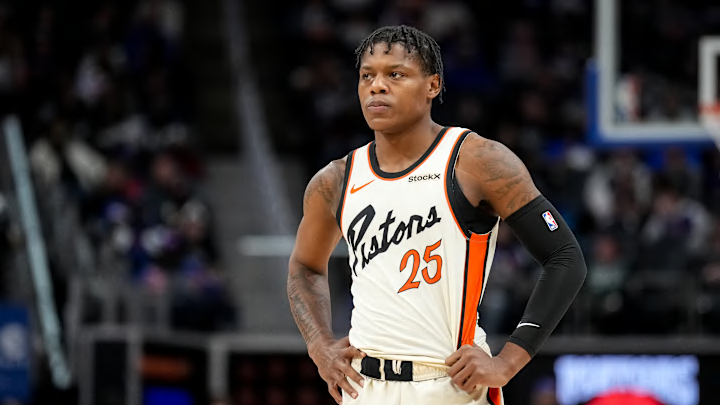If one were to simply go by the numbers, Detroit Pistons up-and-comer Marcus Sasser has proven himself ready to break out. He's a dynamic point guard with the per-36 averages and efficiency to not only step into a significant role, but start for a vast majority of NBA teams.
If the current roster holds true to form, then the Pistons will have left the door wide open for Sasser to answer a critical question in 2025-26: Is he as good as the numbers suggest?
Detroit completed a draft-night trade to select Sasser at No. 25 overall in the 2023 NBA Draft. It was a bold investment in a player who spent four years at the University of Houston, earning rave reviews for his play on both ends of the floor.
In 2022-23, Sasser won the Jerry West award, the AAC Player of the Year honor, and was named a consensus First-Team All-American—all while leading Houston to a third straight Sweet 16 appearance.
Statistically, Sasser has hit the ground running in the NBA. Through two seasons, he's compiled averages of 16.0 points, 6.1 assists, 3.2 rebounds, 1.3 steals, and 2.5 three-point field goals made per 36 minutes, shooting at a clip of .441/.378/.863.
Having played just 16.9 minutes per game, however, the jury is still out on whether or not Sasser can be the player the statistics suggest he is.
Is Marcus Sasser as good as the per-36 numbers suggest he is?
Sasser improved his two-point field goal percentage by 7.5 percent and his three-point field goal percentage by 0.7 percent between 2023-24 and 2024-25. He also averaged a mere 2.4 turnovers per 36 minutes while improving his numbers in points, steals, and offensive rebounds per 36.
Despite the statistical progress, Sasser averaged 4.8 fewer minutes per game under J.B. Bickerstaff than he managed with Monty Williams.
At 14.2 minutes played per game in 2024-25, there was only so much Sasser could contribute. It was a rather surprising development considering Jaden Ivey played just 30 games due to injury and Dennis Schröder didn't arrive until February.
With Schröder out of the equation and the Pistons without a backup point guard to play ahead of Sasser, however, minutes should become available in 2025-26.
The Pistons would undoubtedly benefit from Sasser's per-36 production and efficiency translating to a larger sample size of minutes played. Between Sasser and offseason acquisitions Caris LeVert and Duncan Robinson, Detroit could roll out one of the most productive bench perimeter trios in the NBA.
Considering the Pistons allowed 5.4 fewer points per 100 possessions with Sasser on the court in 2024-25, there's also reason to be intrigued by what an increase in playing time could mean for their defense.
The hurdles that Sasser will face include the fact that he shot 33.9 percent on catch-and-shoot threes in 2024-25, thus calling his off-ball value into question. If he rectifies that issue and solidifies his place as a player with two-way value, however, Sasser should eliminate any future concerns.
Unless the Pistons add a point guard via free agency or trade, the door appears to be open for Sasser to finally secure his future.
